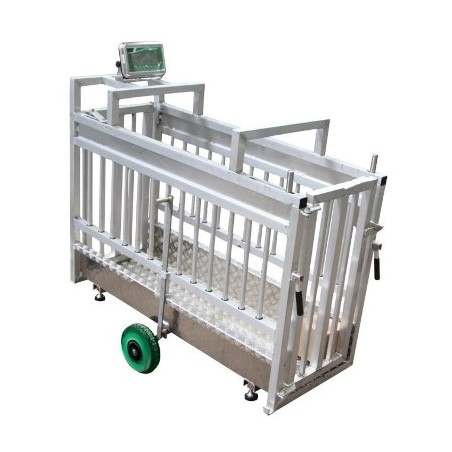Manganese (Mn) is an essential trace mineral that is a key component in carbohydrate, lipid, and protein metabolism, as well as playing a role in mitochondrial superoxide dismutase activity and bone development. Many swine diets today meet the estimated requirement for Mn from the major dietary ingredients before a trace mineral premix is added to the diet. However, due to the unknown bioavailability of the innate Mn in ingredients, there is a wide discrepancy of supplementation level in commercial swine diets. Therefore, the objective of this study was to determine the effects of increasing dietary levels of Mn and source of Mn on growth performance and carcass characteristics of growing–finishing pigs. Two experiments were conducted for that purpose. Dietary treatments were arranged in a 2 × 3 factorial with main effects of Mn source (MnSO4 or Mn hydroxychloride (IBM)) and increasing added Mn (8, 16, and 32 mg/kg of complete diet). Copper (Cu) was added to all diets at 10 and 150 mg/kg in Exp. 1 and 2, respectively. In both experiments, 1994 pigs were used with 27 pigs per pen and 12 replicates per treatment.
As a result, in Exp. 1, there was a marginal Mn source × level interaction for overall feed efficiency (G:F), with a decrease then increase in pigs fed IBM, but G:F increased with increasing Mn from MnSO4. Pigs fed 16 mg/kg Mn, regardless of source, tended to have decreased average daily gain (ADG) and final body weight (BW) compared with other levels. Carcass yield was greatest for 16 mg/kg Mn from IBM. Loin depth increased for pigs fed increasing Mn from MnSO4 but decreased when Mn was increased from IBM. Pigs fed the intermediate level of Mn tended to have the lightest hot carcass weight and decreased loin depth. Pigs fed IBM had increased final BW, ADG, and average daily feed intake (ADFI) compared with pigs fed MnSO4. Pigs fed 16 mg/kg of Mn tended to have reduced ADFI when compared with pigs fed 8 and 32 mg/kg of Mn.

In conclusion, there appears to be little benefit in growth performance by feeding more than 8 mg/kg of added Mn. When high levels of Cu were fed in Exp. 2, pigs fed IBM had improved growth performance when compared with those fed MnSO4.
Kerkaert HR, Woodworth JC, DeRouchey JM, Dritz SS, Tokach MD, Goodband RD, Manzke NE. Determining the effects of manganese source and level on growth performance and carcass characteristics of growing–finishing pigs. Translational Animal Science. 2021; 5(2): txab067. https://doi.org/10.1093/tas/txab067





